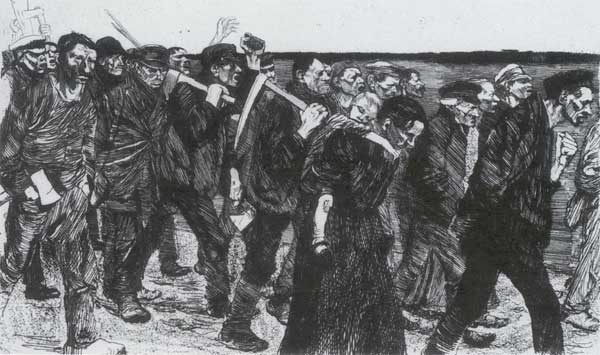

the Haber-Bosch process (1910)

the Second Industrial Revolution (1871-1914) was about the development of heavy industries such as steel,
chemicals, and petroleum. Its power sources were electricity, the internal combustion engine, and the gas turbine

Parkesine (1862) is the trademark for the first man-made plastic

the shuttle windings for the armature of the electric generator (1857) were designed by Werner von Siemens.
This was a major step toward the development of electrical generators without permanent magnets
the Siemens regenerative furnace (1856)

the Bessemer process (1855) for producing inexpensive steel in a blast furnace was introduced by Henry Bessemer

wood pulp (1848) for papermaking was invented by Friedrich Gottlob Keller. Further
experimentation by American chemist C.B. Tilghman and Swedish inventor C.F. Dahl
enabled the manufacture of wood pulp using chemicals to break down the fibres

the Chicago Board of Trade (1848) is the world's oldest futures and options exchange

the Communist Manifesto was first published on (February 21, 1848)

der Weberaufstand (1844)

the selfactor (1825) was patented by Richard Roberts

the Stirling engine (1816) was patented after the Scottish clergyman Rev. Robert
Stirling made significant improvements to earlier designs by Sir George Caley

the Davy lamp (1815)

the first commerically successful steam locomotive (August 12, 1812) was built by John Blenkinsop, owner of
the Middleton Colliery, who teamed up with Matthew Murray to build a steam-operated railway to transport
coal about 3 miles to Leeds. It could haul as many as 30 loaded coal cars at a speed of 3 mph
the Luddite movement (1811-1817)
the first canning factory (1804) was opened following the invention of the process by Nicholas Appert

Gas obtained from carbonized coal, known as town gas (1800s) became the
primary fuel for illuminating streets and houses throughout much of Europe
a continuous paper making machine (1799) was invented by Nicholas Louis Robert

the cotton gin (1793) was built by Eli Whitney

Samuel Slater (1793) began the American Industrial Revolution
with the construction of the first successful textile mill

outside of 68 Wall Street (May 17, 1792) the Buttonwood Agreement,
which established the NYSE, was signed by twenty-four stock brokers

the high-pressure steam engine (1790s) was improved by Oliver Evans

the Watt Governor (1788)

the power loom (1785) was built by Edmund Cartwright

the puddling furnace (1784) was patented by Henry Cort

the Smethwick engine (May 1779) was built by James Watt and Matthew Boulton

the spinning mule (1778) was developed by Samuel Crompton, combining the spinning jenny with Richard Arkwright's spinning frame

Honoré Blanc began producing some of the first firearms with interchangeable parts (1778) Thomas Jefferson
saw a demonstration in 1785 and took the idea back to the United States, where Eli Whitney and other
inventors moved the concept forward when he introduced the American System of manufacturing in 1799

Richard Arkwright installed the water frame (1771) in his cotton mill at
Cromford,
on the River Derwent, creating one of the first factories that were specifically
built to
house machinery, rather than just bringing workers together

the Watt steam engine (1765)

the spinning jenny (1764) was invented by James Hargreaves

Industrial Revolution (1760 - present)

the lead chamber process (1746) was invented by John Roebuck

the flying shuttle (1733) was invented by John Kay

the steam engine (1712) was reinvented by Thomas Newcomen

Abraham Darby (1709) set up a coke-fired blast furnace to produce cast iron. The ensuing
availability of inexpensive iron was one of the factors leading to the European industrial revolution
F. Hawksbee (1709) improved the design of Newtons electrostatic generator
by using a metal chain to capture the electricity generated by friction

Thomas Savery patented “the Miner’s Friend” (1698) a machine that pumped out
water from coal mines; it became the first practical machine powered by steam

French physicist Denis Papin, with the help of Gottfried Leibniz (1687) built a working model of a steam engine and a paddle steam boat

Hugh Platt discoverd coke (1603) a charcoal-like substance produced by heating coal